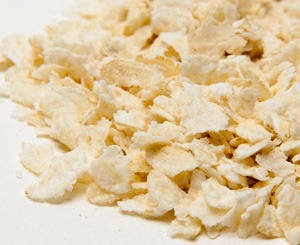Do Corn and Rice Adjuncts “Dry Out” Beer?
TroubleShooting
Robert Deal — Palo Alto, California asks,
I hear a lot about corn and rice “drying” out a lager. What is it about these adjuncts in particular that makes them ferment out more?
Dryness is a perception when used as a sensory term and as an analytical/numerical thing when used to describe fermentation. When wort is “fermented to dryness,” all fermentable sugars have been fermented by the yeast strain being used. Because of differences among yeast strains some yeasts can ferment sugars that others cannot, and some strains secrete enzymes that convert dextrins, which are unfermentable by all brewing yeasts, into glucose, which is fermentable by all brewing yeast strains. In other words, “fermented to dryness” is influenced by wort carbohydrate profile and by the brewer’s yeast strain selection.
Rich and malty beers, like doppelbocks and Scotch ale, can be both dry from an analytical perspective, i.e., no fermentable sugars are left in the beer, and have residual sweetness when described in sensory terms. That’s because these beers contain unfermentable, sweet-tasting compounds from malt and because salivary amylases in the mouth can convert unfermentable carbohydrates, which are not particularly sweet, into glucose, which is sweet.

OK, so let’s focus on beers brewed with rice and corn adjuncts. In the early 1900s, these adjuncts represented about 10–15% of the total extract in North American lagers. Over the past century, the adjunct ratio in these beers has increased to where some mainstream lagers derive up to about 55% of the carbohydrate extract from adjuncts. Adjuncts are used for a variety of reasons, including how they influence beer flavor. Here is a fun question: Do beers like Budweiser have a lower apparent extract (finish gravity) than all-malt Pilsner beers with similar original gravity (OG) and ABV? Before answering the question, let’s add in that almost all trained beer tasters will agree that beers like Budweiser have a lighter mouthfeel than their all-malt cousins. In the vernacular of the consumer, these types of beers are described as thin, light, crisp, and watery. But the interesting thing is that these beers have apparent extracts that are aligned with their all-malt cousins, with the caloric values to prove their heft.
What’s going on here? It seems that thin mouthfeel would go hand-in-hand with a lower finish gravity, right? The main differences between malted barley and adjuncts, like rice and corn, are that malt contains hydrolyzed carbohydrates and proteins going into the kiln for the final step in the malting process. As malt is dried in the kiln, so-called reducing sugars react with free amino groups of amino acids and proteins to form Maillard reaction products (MRPs).
MRPs contribute a wide range of aromas, tastes, and colors to beer and foods. In addition to MRPs, malt contains proteins that don’t participate in the Maillard reaction, beta-glucans, and arabinoxylans. These large molecules contribute mouthfeel, body, and foam stability to beer. And this is really why beers brewed using adjuncts are generally perceived as being dryer than all-malt beers. The same explanation is true for how brewing sugars, like sucrose and dextrose/glucose, lighten the body of weighty styles like double IPAs and Belgian golden ales.
When wort is “fermented to dryness,” all fermentable sugars have been fermented by the yeast strain being used.
I am certainly not arguing that beers brewed with rice and corn always have the same final gravity as all-malt beers with similar OGs, but I am stating that many do. When brewers want to boost wort fermentability, changes to mash profile and mash time can be made, exogenous enzymes can be added, or different yeast strains may be chosen. And with what we now know about hop creep, dry hopping with hops known to cause creepin’ is another tool we can use.
In practical terms, worts made from starchy adjuncts are often produced using more intensive mashing methods that result in more fermentable wort compared to single-temperature mashing. The typical adjunct brew employs the double-mash method where one part of the mash goes through a cooking process to gelatinize adjunct starches while the second part of the mash, known as the rest mash, is started in a mash mixer. The rest mash cools the hot mash from the cooker, resulting in a blended mash temperature in the 154–158 °F (68–70 °C) range. As the two parts of the mash are blended, there is interplay between beta and alpha amylase; depending on how quickly the two parts are mixed, wort fermentability can be pushed up or down. The same basic process is used in decoction mashing and explains why some brews made from decoction and double mashes have a lower final gravity than beers made from a less intensive mashing like a single-infusion.

